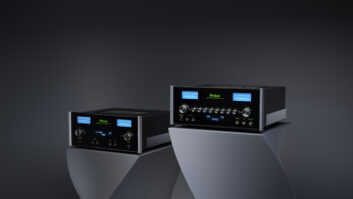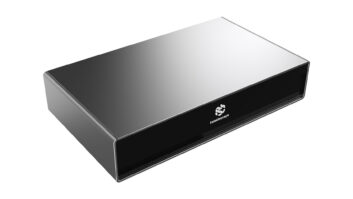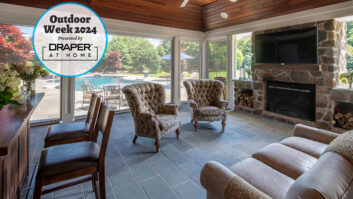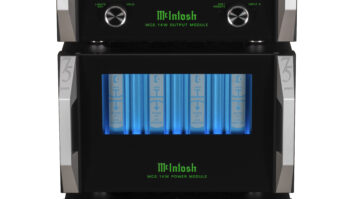Apples wildly successful iPod, with its unparalleled panache, has helped spur a seismic shift in consumer awareness of digital media. Private sectors are getting caught up in the mania, too. Duke University in North Carolina stated that it will outfit its 1,600 incoming freshmen with 20GB iPodsequipped with lecture notes and audio bookswhen fall term commences. An additional 150 iPods will be given to members of the universitys faculty.
“The success of the iPod represents a paradigm shift in digital awareness,” stated Nicole DiDio, adjunct professor of design and technology at Parsons School of Design in New York City. “iPod is being snatched up so quickly because it is sexy, portable and practical. You carry your entire Jukebox in a device smaller than a deck of cards.”
Apple has stated that its last quarter profits tripled, driven by iPod demand; sales spiked to approximately $2B from $1.55B.
While RealNetworks is the only other company to offer compatibility with the iTunes format (a fact that Apple claims breaches the Digital Millennium Copyright Act), consumers continue supplanting CD players with solid state devices, downloading music and movies from the web, and compressing discreet A/V into storage-ready formats. Hard drives are becoming the de facto standard for music and film. This translates into epic potential for the residential marketplace. Or does it?
As Gordon van Zuiden, president of residential systems firm cyberManor, recently noted, many industry experts agree that the smart home of future will incorporate a centrally located and easily accessible hard drive for movie and music storage. This drive will act as the nerve center for wireless or wired distribution to set-top boxes, PCs and/or mobile media players.
van Zuiden also asserted that until a panacea is created that meets everyones needs, custom electronics integrators will continue designing and controlling digital media solutions from multiple vendors in several locations throughout the home.
Nonetheless, the products that will launch at CEDIA in September offer robust features and reflect the gravitation toward common standards and copyright resolution.
The most popular players in media server segment continue to be ELAN, Escient, Denon, Marantz, Integra, Imerge, Meridian, Intellinet, Russound, Sonance, ReQuest Multimedia, Niles and Kenwood, among others. New companies are also expected to showcase impressive product in Indianapolis this September.
MEDA Systems, established last year by Steve Raschke, will display its new line of Brvo Music Servers that deliver synchronized multi-source, multi-zone whole-house audio.
Brvo Servers are powered by MEDAs DEOS (Digital Entertainment Operating System) featuring MZSync technology for synching multiple audio sources in numerous zones through analog, digital or IP-based entertainment systems. The server can be operated from myriad visual or tactile control devices, including universal remotes, TVs, PDAs, wireless Pocket PCs, computer browsers, web pads and in-wall keypads.
No programming is necessary when using Brvo as a stand-alone system. Its interfaces also include an RS232 connection for communication with Crestron, AMX, Xplore, Xantech, ADA, and other control systems; XML and HTTP over Ethernet (LAN or WAN) and infrared.
Brvos are available in four models configured for use with up to 12 audio sources and 16 zone outputs. Each server can store thousands of songs or add optional additional storage capacity up to 500GB (over 7,000 CDs).
“Because of Brvos scaleability and capabilitiesincluding a digital matrix switcher with preampswe are making high-end audio distribution systems available at the mid-level price point,” Raschke said. “The Brvo is capable of being an entire distributed music system all by itself.”
AMX has enhanced its MAX digital content server platform, which, according to the company, includes enterprise grade enhancements.
MAX is designed to store, manage and distribute digital audio and video data, allowing users to control a library of digital media, and to instantly play content from different integrated environments. MAX will retain the existing features that it had when launched as a residential product, but has added different hardware and capabilities to reach new markets.
Instead of operating as either a music server or a multimedia server, MAX is being sold as a single product that stores both audio and video content and is available in two configurations: a one-unit style with one Terabyte hard drive, or a two-unit style with three Terabyte hard drive.
Kaleidescape will use the CEDIA stage to demonstrate its new K2500 Digital Movie Player. K2500 can deliver DVD and HD movies in digital format from source to display without analog conversion. It connects via a switched Ethernet network to a Kaleidescape Server and provides an HDMI output to connect to audio/video processors and displays. Video processors and displays with (DVI inputs and high-bandwidth digital content protection (HDCP) can be connected using an HDMI to DVI adapter.
The K2500 is configurable to output high-definition video in 720p and 1080i, as well as 480i and 480p NTSC formats, and 576i and 576p PAL formats via HDMI and YPbPr component outputs. Additionally, upscaling of native 480i and 576i DVD content to either 720p or 1080i is available on the HDMI output. Faroudja DCDi and FilmMode deinterlacing provide a progressive video output.
Sonos is another new company offering digital music distribution without a PC in every room, a music server or a wireless network. Sonos was designed to work as an out-of-the-box solution, therefore custom electronics integrators are not the only people qualified (and encouraged) to install it.
SkipJam Corp., a start-up manufacturer of home media networking solutions in Port Chester, New York, has introduced SkipJam iMedia, which it is marketing as the “first and only high-fidelity, all-digital integrated home entertainment system which combines whole-house audio and video distribution with digital recording and home control.”
The technology is designed to create a complete whole-house A/V system starting at $800 less than any other standard wired or wireless home network. SkipJams system integrates PVR, DVR, streaming, Universal Remote Control, On-TV PC Access and analog device switching.
Bradd Fisher, of Residential Systems Design (www.wedoresi.com), is a reliable litmus test for the solid state. His firm, headquartered in Exton, Pennsylvania, with locations across the country, is the gold standard in residential control system programming.
“We ask that all the manufacturers allow us to borrow their pieces to test with and to write a code block for AMX and Crestron Control systems and as well,” Fisher stated. “We then use this information to suggest to our 100 plus dealers what pieces we recommend. We have in-house tested Kaleidescape, Audio Request, Media Access Solutions (prior to their acquisition by AMX), AMX MAX, Escient Fireball, Escient DVDM, Arrakis.” He is also procuring the Integra HD server this month.
Fisher urges manufacturers to consider MAC integration as they develop next generation product. Currently, AudioRequest is one of the few products that is very supportive of MAC users. “Today everyone uses iTunes and iPods,” he said. “Clients who purchase music via iTunes currently have no easy way to get that music into their media players. As well, AMX is suggesting the ability to have a video web server built in to allow an integrator to display cover art on a touchpanel via a dynamic image. This is such a cool idea that it is now necessary, in my opinion. Having the ability to stream the on-screen display would be a major plus, too.”
Margot Douaihy is managing editor of Residential Systems.







